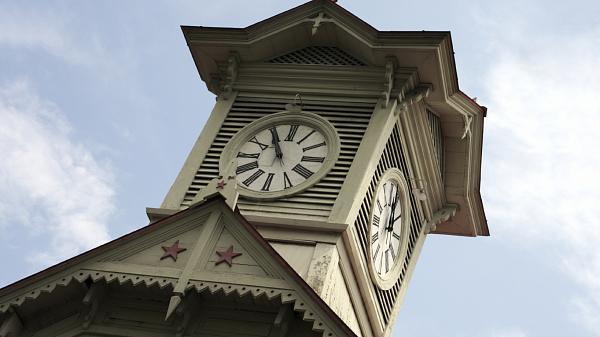Thousands in Japan Adopt “Daylight Saving” Plan
Many people in Sapporo have adopted a "daylight saving" plan, which is more of a flexi-time system.

Thousands in Japan Adopt “Daylight Saving” Plan
©iStockphoto.com/japonchik
In the Japanese summer* of 2008, thousands of people in Hokkaido followed an optional daylight saving schedule in hope that they would start and leave work earlier by an hour. However, not everyone in the prefecture, located in northern Japan, observed the schedule and this created confusion, tension and uneasiness in many work places. The daylight saving plan is also referred to as the “summertime system” but it is more of a flexi-time system.
Japan is nine hours ahead of Coordinated Universal Time (UTC+9), although many people in Hokkaido begin the day one hour earlier during the summer months.
Conflict of Interest
Some people who observed the daylight saving plan found it hard to leave work earlier than their anti-daylight saving colleagues. As a result, some employees were pressured to work longer hours. According to BBC News, there was unwillingness among managers, and customers, to accept that workers who start work an hour earlier should be allowed to finish earlier. Nonetheless, many companies and government offices still offered their employees a chance to shift their working hours to accommodate for the voluntary daylight saving plan.
The Daylight Saving Plan
Many people in Sapporo, which is Hokkaido’s capital city, began the day one hour earlier than the rest of the nation during the daylight saving schedule. The experiment, which began in 2003, mainly involves changing the work hours so people can come into work an hour earlier and leave an hour earlier in the summer months. This schedule occurs annually, usually from the first Sunday of April to the last Sunday of September. The clocks move one hour forward during the summer months and then one hour back when the daylight saving plan ends.
Hokkaido’s daylight saving schedule is voluntary despite the fact that Japan does not officially observe daylight saving time. Many of the region’s businesses and individuals, including the Hokkaido Chamber of Commerce and many of Sapporo’s city council workers, support the daylight saving plan. Moreover, there are proposals for this plan to become official.
South Korea and Japan – Joint Daylight Saving Plan?
In light of these events, South Korea’s Knowledge and Economy Minister Lee Yoon-ho asked Japan’s Economy, Trade and Industry Minister Amari Akira at a conference in 2008 to consider a joint introduction of daylight saving time between the two nations.
The South Korean minister believed that a joint daylight saving policy would enhance the synergy between the two countries but the Japanese minister did not wish to continue discussing the matter. In May 2008 about 250 members of the National Diet of Japan, the nation’s legislature that comprises the lower and upper houses, promoted daylight saving time and drafted a bill to recommend turning clocks an hour ahead from 2am (local time) on the last Sunday of March to 2am (local time) on the last Sunday of October. Those who opposed the recommendation believed that daylight saving time would only promote longer work hours for the nation’s employees.
Brief Daylight Saving History
From 1948 to 1951, Japan observed daylight saving time between April/May and September every year. However, it proved to be unpopular as many people complained about sleep disruption and longer work hours. Japan finally abolished daylight saving time in 1952. Daylight saving time was never officially implemented nationwide since then.
However, in 2003 Hokkaido’s Chamber of Commerce began a daylight saving experiment that was more of a flexi-time system. This daylight saving schedule promoted the effective use of sunlight during the day for many reasons, including health, economic and environmental reasons. That year more than 220 companies and 6000 workers participated in the experiment, which has since grown to involve thousands of people who observe the daylight saving plan each year.
From a business perspective, the voluntary daylight saving schedule achieved a boost to the local economy, tourism, and energy efficiency, as well as having a positive effect on leisure and entertainment interests. A decline in the number of traffic accidents and criminal activities were other outcomes of the plan. The disadvantages included: longer working hours for some people; time gaps between Hokkaido and the rest of Japan; heightened communication problems relating to settlement and payment issues; and perceived health issues.
Note: that any reference to summer in this article relates to the northern hemisphere’s summer time, not summer in the southern hemisphere.